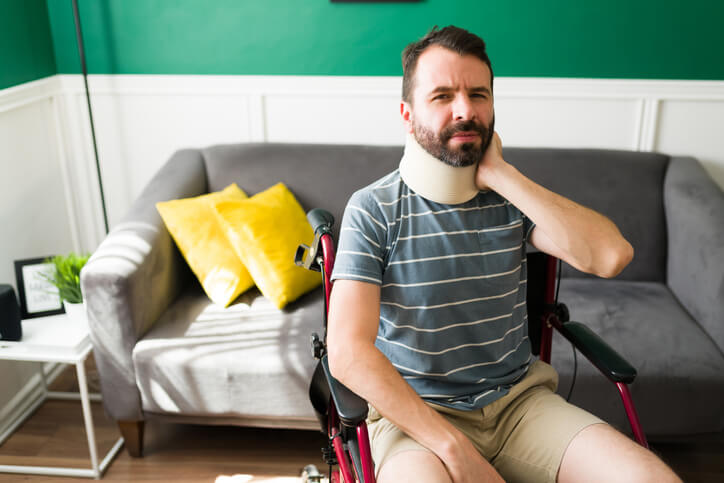A bilateral C2 fracture, also called “the hangman’s fracture,” is usually fatal. This devastating injury can happen in car accidents, falls, and sports, as well as when people try to hang themselves. A C2 fracture can damage the spinal cord at a level that paralyzes the respiratory muscles and makes it impossible for the individual to breathe without immediate medical intervention. The C2 vertebra is high in the neck, just below the skull.
If you broke your C2 or a close relative died from a hangman’s fracture, you might want to talk to a New Jersey personal injury attorney. The hangman’s fracture: breaking your C2 vertebrae can leave survivors paralyzed from the neck down, also called quadriplegia.
Does a Hangman’s Fracture Always Cause Immediate Paralysis or Death?
No, not always. It is possible to break a vertebra without getting paralyzed or dying right away because the spinal bones do not directly affect the respiratory muscles. The nerves in the spinal cord run from the brain through the spine to the arms, legs, chest, and abdomen. The nerves carry messages from the brain to the muscles and organs that tell them when they need to work.
Without these messages, the body does not function. The vertebrae serve as a sort of cage around the nerves of the spinal cord, protecting them from harm. If a bone in the spinal column gets fractured, that area of the spinal cord is in danger of injury. For example, if a jagged edge or fragment of the broken vertebra punctures or severs the spinal cord, paralysis or death can happen quickly.
A person with a hangman’s fracture that has not yet damaged the spinal cord is walking around with a ticking time bomb. A hangman’s fracture usually involves two breaks in the bone, one on either side of the vertebra. Eventually, the broken vertebra will almost certainly fail and cause spinal cord damage.
What Should You Do After an Accident if You Suspect a Neck or Spinal Injury?
If you have pain in your neck or back after an accident, whether it is a car crash, a sports injury, a slip, and fall, or some other event, you should get medical attention at once. Do not move at all, if possible. Call an ambulance and warn the EMTs about a possible neck or spinal fracture.
Spinal cord injury is irreversible. Sometimes, it is possible to save a person’s life and mobility with immediate intervention after a broken neck.
What Are the Symptoms of a C2 Hangman’s Fracture?
People with a broken C2 vertebra often experience extreme pain in the neck at the base of the skull. The intense discomfort can wrap around and over the head and above the eyes. The patient might have visible neck spasms or show clear indications of nerve damage.
How Does a Hangman’s Fracture Happen?
A hangman’s fracture can happen when a sudden force causes hyperextension of the head and neck. Think of the snapping motion that occurs during execution by hanging. Events that cause similar motions, like a diving accident, contact sports, or falling, can cause this gruesome fracture. Also, when a person in a collision does not wear a seatbelt, hitting the dashboard or getting flung about the car can cause a C2 fracture.
A New Jersey personal injury attorney can help you go after money damages for a C2: hangman’s fracture that was someone else’s fault. Contact our office today to schedule a consultation.

